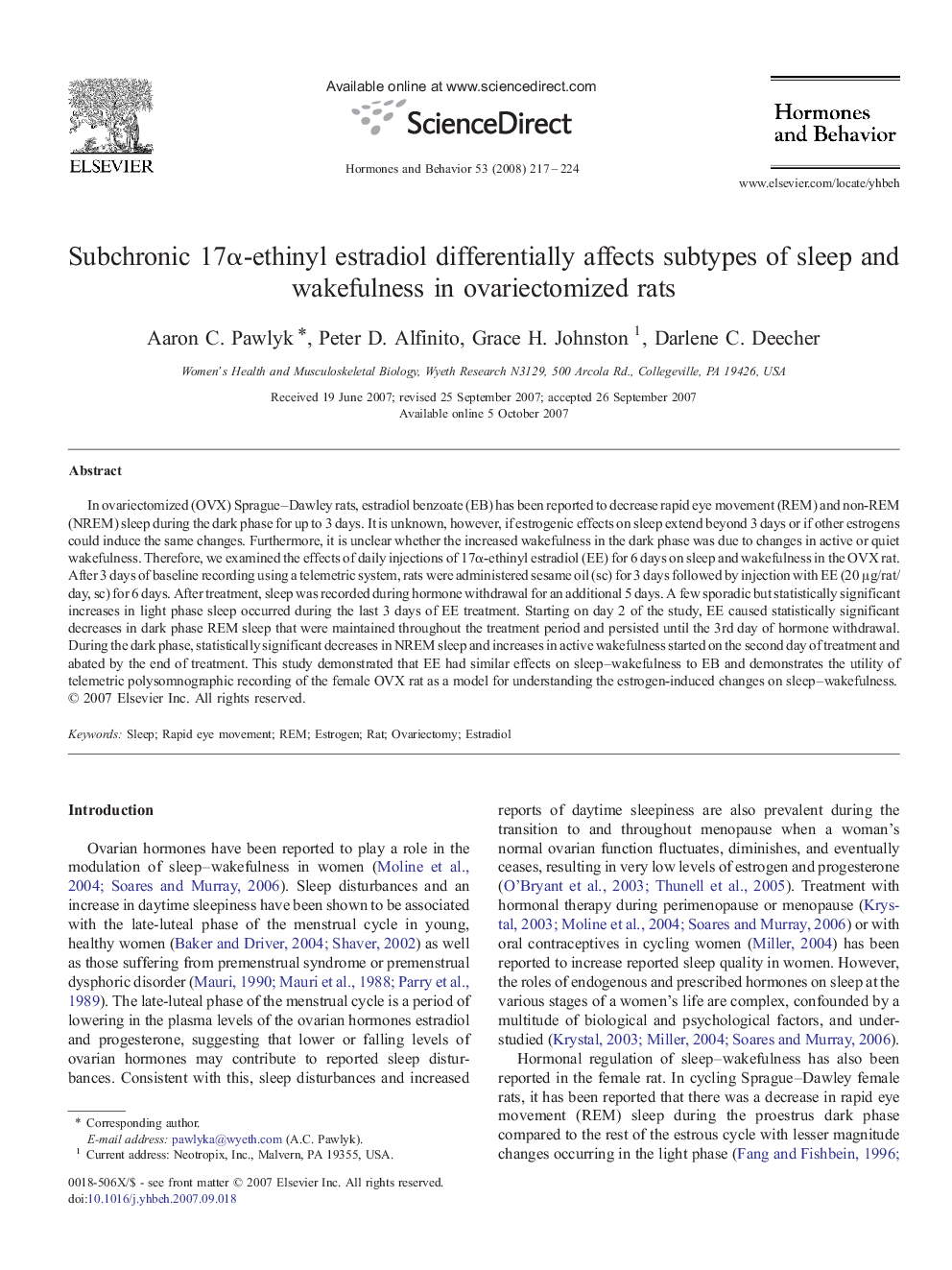| Article ID | Journal | Published Year | Pages | File Type |
|---|---|---|---|---|
| 10301387 | Hormones and Behavior | 2008 | 8 Pages |
Abstract
In ovariectomized (OVX) Sprague-Dawley rats, estradiol benzoate (EB) has been reported to decrease rapid eye movement (REM) and non-REM (NREM) sleep during the dark phase for up to 3 days. It is unknown, however, if estrogenic effects on sleep extend beyond 3 days or if other estrogens could induce the same changes. Furthermore, it is unclear whether the increased wakefulness in the dark phase was due to changes in active or quiet wakefulness. Therefore, we examined the effects of daily injections of 17α-ethinyl estradiol (EE) for 6 days on sleep and wakefulness in the OVX rat. After 3 days of baseline recording using a telemetric system, rats were administered sesame oil (sc) for 3 days followed by injection with EE (20 μg/rat/day, sc) for 6 days. After treatment, sleep was recorded during hormone withdrawal for an additional 5 days. A few sporadic but statistically significant increases in light phase sleep occurred during the last 3 days of EE treatment. Starting on day 2 of the study, EE caused statistically significant decreases in dark phase REM sleep that were maintained throughout the treatment period and persisted until the 3rd day of hormone withdrawal. During the dark phase, statistically significant decreases in NREM sleep and increases in active wakefulness started on the second day of treatment and abated by the end of treatment. This study demonstrated that EE had similar effects on sleep-wakefulness to EB and demonstrates the utility of telemetric polysomnographic recording of the female OVX rat as a model for understanding the estrogen-induced changes on sleep-wakefulness.
Related Topics
Life Sciences
Biochemistry, Genetics and Molecular Biology
Endocrinology
Authors
Aaron C. Pawlyk, Peter D. Alfinito, Grace H. Johnston, Darlene C. Deecher,
